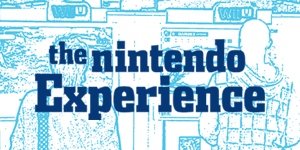Extra: Diving Into The eShop’s Blue Ocean
Nintendo may have been late to the digital storefront scene, but in the past few years they have made huge strives with the eShop on both Nintendo 3DS and more recently, Wii U. From a great selection of indie and niche titles to all sorts of promotions such as early releases, the eShop has really come into its own… for gamers. But gamers are only half of the Nintendo story. Yes, us gamers are the ones who will spend countless hours exploring Hyrule and plucking Pikmin, but it’s the non-gamers – the casuals – who transformed sales of Wii and Nintendo DS from just good to astronomical. Now, it’s time for Nintendo to finally bring the eShop to those soccer moms, senior citizens, and everyone in between. And they’re doing it with the games that started it all: Wii Fit and Wii Sports.
To date, the eShop has been growing at a rapid pace. As of this past April, 11% of all first-party 3DS game sales were digital. Some titles have experienced even higher digital numbers. Animal Crossing: New Leaf, for example, saw 20% of its launch month’s sales come from eShop downloads, while a full third of Fire Emblem Awakening purchases were downloads. For every copy of a game that is sold digitally, Nintendo makes more money. The company doesn’t have to pay for distribution and packaging, or give retailers a cut of the profit. There is also the added perk of post-release downloadable content. If someone buys a game digitally, they are more likely to know of, and potentially purchase, DLC. In the case of Fire Emblem, over half of those who bought the game digitally went on to buy DLC. This all adds up to be a lot of money for Nintendo; money they wouldn’t be seeing if they only did standard retail releases. It’s the reason we’re seeing Nintendo experiment more and more with their digital strategy, as exemplified by the early releases of New Super Luigi U and The Legend of Zelda: The Wind Waker HD.

It’s now the casuals’ turn to be experimented on. They are a huge potential market for Nintendo’s digital initiatives, a “blue ocean” that Nintendo can dive right into. In yesterday’s Nintendo Direct, the company revealed its plans for Wii Fit U and the previously unannounced Wii Sports Club, an HD remake of the original Wii Sports that will include online play. Both titles will be coming out in time for the holidays, providing casual-friendly fare in a Wii U lineup packed with core games. Most interesting, however, is that they will both be digital releases through the eShop. Wii Fit U won’t be on store shelves until 43 days after its eShop release, while a physical copy of Wii Sports Club hasn’t even been hinted at. Essentially, Nintendo is taking two of its biggest casual-facing franchises and putting them behind the walls of the eShop. These games won’t be able to catch the eye of casual buyers in stores because they simply won’t be on shelves, meaning that Nintendo is risking huge sales opportunities in the name of the eShop. It may seem like an odd strategy, but after the taste of success that Nintendo has gotten with its digital storefront, it makes sense that they want to convince gamers of all types, including casuals, to start downloading. This is a turning point for the eShop as it moves from being just for gamers to a storefront for every type of consumer.
To achieve this goal, Nintendo is pulling out all the stops. Wii Fit U will initially be available for free. For thirty days after its download, Wii U owners will be able to use the software, in its entirety, at no cost. The freebie is extended indefinitely if a $19.99 Fit Meter is purchased and synced up with the game. Similarly, Wii Sports Club will grant free access to all five of its sports for 24 hours following its initial download. From there, Wii U owners will be able to choose to either buy each sport individually at $9.99 a pop (totaling to a standard price of roughly $50) or purchase individual 24-hour passes to all five games for $1.99 per day. This latter option is actually a rather smart idea: people who only play Wii Sports when family or friends are over may prefer to spend a couple dollars at those times instead of shelling out full prices to just play every so often. Nintendo has never done promotions like this, yet here they are taking two of the Wii generation’s biggest sellers and discounting them in surprisingly big ways – all to boost eShop adoption.

Granted, these unique pricing structures may not be enough to carry these games. Casuals may have moved on to multipurpose devices like tablets, swapping out Wii Remote swinging for Angry Birds flicking. Or maybe buying a $300 Wii U is still too high a barrier of entry, even if the games people want are cheaper than ever. Nintendo will have to convince the public that it’s worth the price of admission, which will likely require a massive marketing campaign simply to raise awareness about these suddenly key holiday titles that won’t be on store shelves and prior to 24 hours ago, weren’t really known about at all. If Nintendo is serious about this, it means we will see Wii Fit U on the Today Show, Wii Sports Club on Good Morning America, and the eShop being name-dropped at every opportunity. It will be a costly endeavor for Nintendo, but it’s a long-term play. If Nintendo can get people to buy the Wii U, visit the eShop, and download these games, they can build a user base of future downloaders, thus ensuring higher profits for future titles. After all, as Nintendo Global President Satoru Iwata explained during an April 2013 financial briefing, gamers who download one title are more likely to download again in the future. Time will tell if casuals are the same way.



